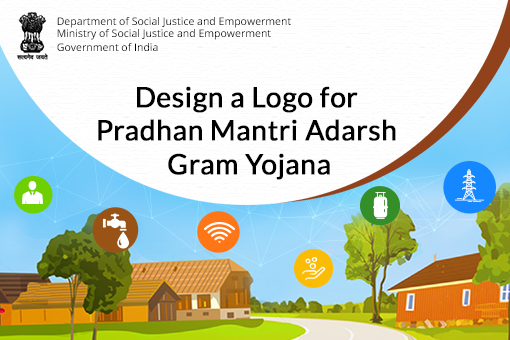- Chandigarh UT
- Creative Corner
- Dadra Nagar Haveli UT
- Daman and Diu U.T.
- Department of Administrative Reforms and Public Grievances
- Department of Biotechnology
- Department of Commerce
- Department of Consumer Affairs
- Department of Industrial Policy and Promotion (DIPP)
- Department of Posts
- Department of Science and Technology
- Department of Telecom
- Digital India
- Economic Affairs
- Ek Bharat Shreshtha Bharat
- Energy Conservation
- Expenditure Management Commission
- Food Security
- Gandhi@150
- Girl Child Education
- Government Advertisements
- Green India
- Incredible India!
- India Textiles
- Indian Railways
- Indian Space Research Organisation - ISRO
- Job Creation
- LiFE-21 Day Challenge
- Mann Ki Baat
- Manual Scavenging-Free India
- Ministry for Development of North Eastern Region
- Ministry of Agriculture and Farmers Welfare
- Ministry of Chemicals and Fertilizers
- Ministry of Civil Aviation
- Ministry of Coal
- Ministry of Corporate Affairs
- Ministry of Culture
- Ministry of Defence
- Ministry of Earth Sciences
- Ministry of Education
- Ministry of Electronics and Information Technology
- Ministry of Environment, Forest and Climate Change
- Ministry of External Affairs
- Ministry of Finance
- Ministry of Health and Family Welfare
- Ministry of Home Affairs
- Ministry of Housing and Urban Affairs
- Ministry of Information and Broadcasting
- Ministry of Jal Shakti
- Ministry of Law and Justice
- Ministry of Micro, Small and Medium Enterprises (MSME)
- Ministry of Petroleum and Natural Gas
- Ministry of Power
- Ministry of Social Justice and Empowerment
- Ministry of Statistics and Programme Implementation
- Ministry of Steel
- Ministry of Women and Child Development
- MyGov Move - Volunteer
- New Education Policy
- New India Championship
- NITI Aayog
- NRIs for India’s Growth
- Open Forum
- PM Live Events
- Revenue and GST
- Rural Development
- Saansad Adarsh Gram Yojana
- Sakriya Panchayat
- Skill Development
- Smart Cities
- Sporty India
- Swachh Bharat (Clean India)
- Tribal Development
- Watershed Management
- Youth for Nation-Building
Design a Logo for Pradhan Mantri Adarsh Gram Yojana (PMAGY)

Scheduled Castes (SCs), who constitute 16.6% of our population as per 2011 Census, have historically suffered social, educational disabilities and economic deprivation. Special ...
Scheduled Castes (SCs), who constitute 16.6% of our population as per 2011 Census, have historically suffered social, educational disabilities and economic deprivation. Special provisions have been made in the Constitution for advancement of their interests.These provisions range from:
a. measures to remove any kind of social disabilities imposed on them to ensure equality of opportunity in every sphere,
b. measures of positive discrimination to bring them on par with rest of the population.
2. The Government has taken a number of initiatives for development of SCs, which have yielded positive outcomes, and have also resulted in narrowing the gap between the Scheduled Castes and the rest of the population. However, the focus of most welfare Schemes of SCs has been mainly centred on individual beneficiaries rather than on the integrated development of SC pockets.
3. To enable an area based development approach a new scheme namely Pradhan Mantri Adarsh Gram Yojana (PMAGY), was launched on Pilot basis during 2009-10. The Scheme aims at integrated development of villages in which the population of Scheduled Castes is above 50%. A total of 1000 villages from Tamil Nadu (225), Rajasthan (225), Bihar (225), Himachal Pradesh (225) and Assam (100) were selected for the Pilot phase of the Scheme. So far total 617 villages has been declared as ‘Adarsh Gram’. During 2014-15, PMAGY was further extended (Phase-I) to cover another 1500 villages across 11 States namely Andhra Pradesh (7), Assam (75), Chhattisgarh (175), Jharkhand (100), Haryana (12), Karnataka (201), Madhya Pradesh (327), Odisha (175), Punjab (162), Telangana (6) and Uttar Pradesh (260).
4. In light of the benefits accruing to the residents of the villages through successful implementation of the Scheme, it was decided to expand the scheme as Phase-II to take up more villages. All those districts have been considered which have villages having total population ≥500 and with more than 50% persons belonging to the Scheduled Castes. Up to 10 such villages in descending order of SC population has been selected from each such district for implementation of the Scheme. Thus 4484 villages has now been taken up for coverage under the Scheme.
5. Under the revised Scheme identification of needs or Gaps with regard to the 50 Monitorable Indicators covering 10 major domains will be based on a Need Assessment exercise. Village Development Plan (VDP) will be based on the data collected as part of the Need Assessment exercise. The Scheme relies heavily on convergence with other initiatives of the Central and State Governments for ensuring that the minimum infrastructure and critical services are made available to all the persons in the village, especially those belonging to the Scheduled Castes.
6. The Scheme further aims to saturate 50 numbers of identified socio-economic indicators, known as Monitorable Indicators, so that the disparity between SC and non-SC population is eliminated and the level of indicators is raised to at least that of the National average.
These Monitorable Indicators are distributed in ten domains which are listed below:
1. Drinking water and Sanitation
2. Education
3. Health and Nutrition
4. Social Security
5. Rural Roads and Housing
6. Electricity and Clean Fuel
7. Agricultural Practices etc.
8. Financial Inclusion
9. Digitization
10. Livelihood and Skill Development
Prize:
The Designer of the finally selected Logo will get a prize of Rs 25,000/- (Rupees Twenty Five Thousand) only.
The last date for accepting entries is 01-03-2019 at 05:00 PM.
Click here to read Terms and Condition
For any contest related queries, write to:
Deepak Kumar Sah
Under Secretary
Department of Social Justice and Empowerment
Email: sahdk.68@nic.in
Office: 011-23383688

